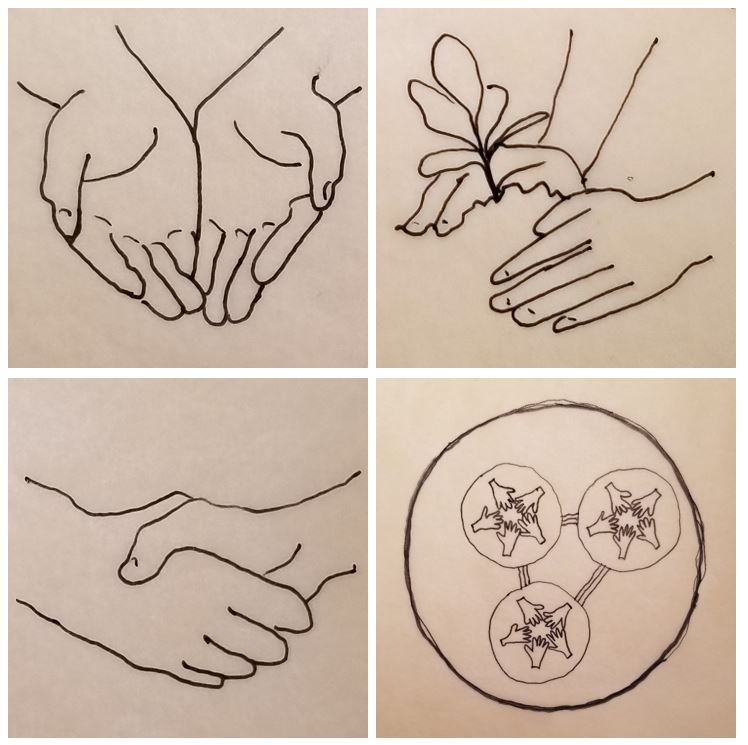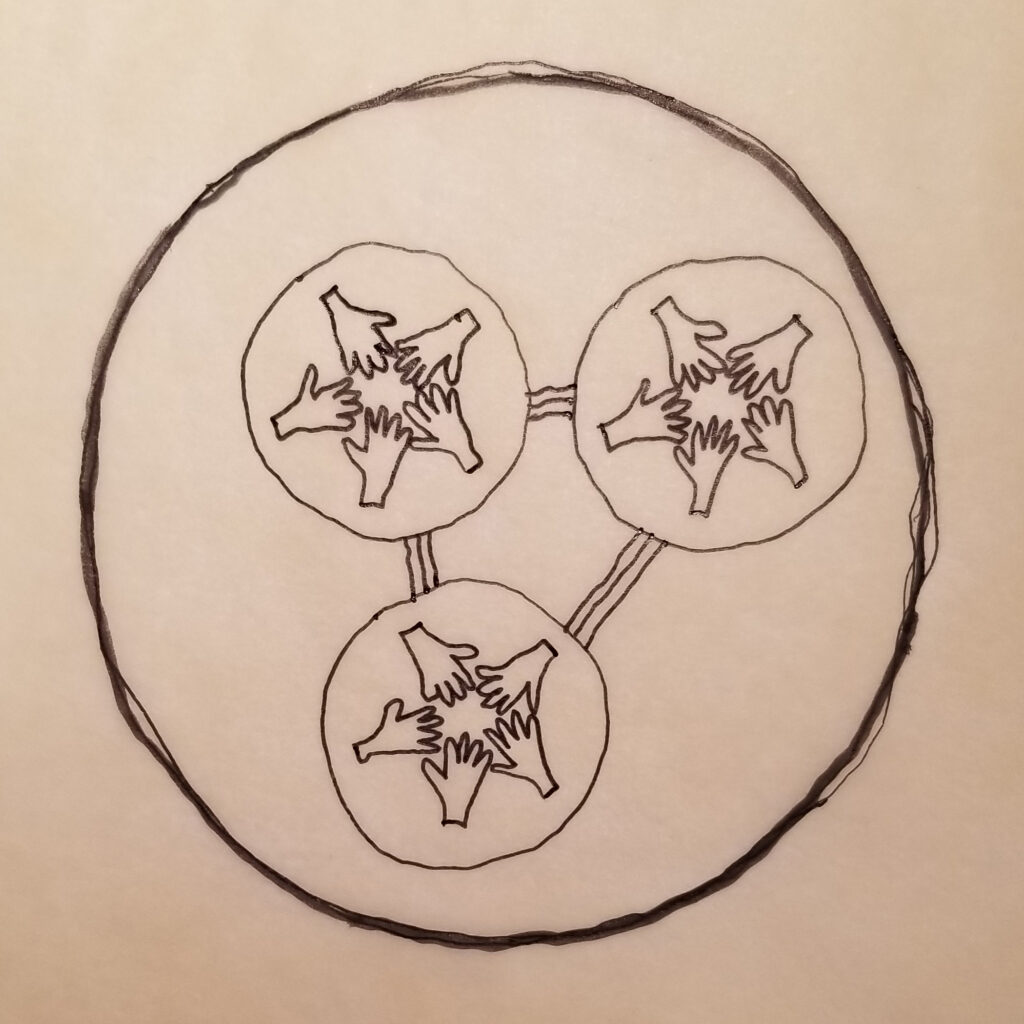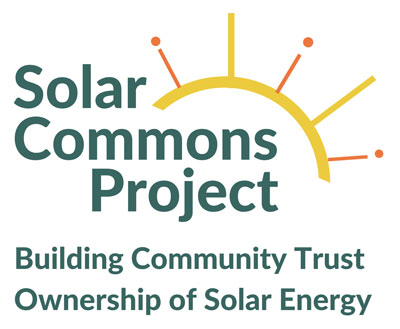
Overview
The Solar Commons Model has several guiding principles that shape its work as a regenerative economy tool for community empowerment. The notion of a gift economy reflected in the mutualism of earth systems and the reciprocity of equitably, intergenerationally shared common wealth; the intention to repair the world of ecological harms and social inequities; and the two elements that Elinor Ostrom, Nobel Prize economist, found were at the heart of successful and enduring commons institutions around the world: ways to ensure trust among community members and peer governance at the most locally workable levels (subsidiarity).

Gift Economy
“This abundance of berries feels like a pure gift from the land. I have not earned, paid for, nor labored for them. There is no mathematics of worthiness that reckons I deserve them in any way. And yet here they are—along with the sun and the air and the birds and the rain, gathering in the towers of cumulonimbi. You could call them natural resources or ecosystem services, but the Robins and I know them as gifts.”
Robin Wall Kimmerer The Serviceberry: An Economy of Abundance
The Solar Commons Project is based on principles of nature’s abundance and the gratitude, reciprocity, and “collective sense of equity and accountability” that indigenous peoples have taught in response to the gifts of the Earth.

Repair the World
“Somewhere in the teachings of every wisdom tradition on earth is the admonition to “make whole that which is broken. In Judaism, it is tikkun olam, ‘repair of the world.’”
John Wackman and Elizabeth Knight, Repair Revolution
The Solar Commons Project embraces principles of reparative justice that support intergenerational equity. We aim to demonstrate the value of Solar Commoning by building community empowerment tools for beneficiairies who are low-income and historically under-served.

Experiment with Trust Governance
“… Common wealth—that is, wealth belonging to everyone equally—include the gifts of nature, societal creations, and economic synergies. It is immense and in some cases imperiled, yet it remains invisible to markets because it is poorly organized and lacks clear property rights. Organizing common wealth so that markets respect its co-inheritors and co-beneficiaries requires the creation of common wealth trusts, legally accountable to future generations.”
Peter Barnes, “Common Wealth Trusts: Structures of Transition”
The Solar Commons Project innovates trust law so that the common wealth benefits of solar energy can be owned in trust by local communities working to build a more equitable world. Community trust ownership is an ancient ownership model. We are updating trust ownership so that people who want to work together to create an enduring common good have a reliable, trustworthy way to do so.

Subsidiarity
“Building trust in one another and developing institutional rules that are well matched to the ecological systems being used are of central importance for solving social dilemmas.”
Elinor Ostrom, Nobel Prize Lecture
The Solar Commons Project is building a community ownership structure that distributes authority among community partners for effective peer governance. We are following Ostrom’s advice to build into the trust agreement rules that delegate authority to the smallest jurisdictional unit (subsidiarity) where localized knowledge and norms can contribute to crafting effective outcomes. Ostrom’s eight design principles for successful commons inform how we co-create peer-governed Solar Commons Trusts with community partners.


